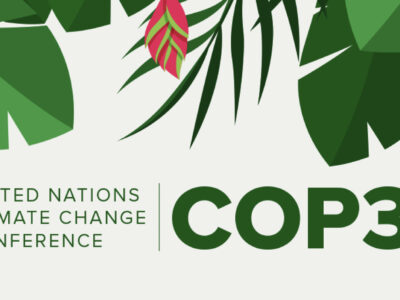Yesterday the USGS released “Abrupt Climate Change, Final Report, Synthesis and Assessment Product 3.4” of the U.S. Climate Change Science Program and the Subcommittee on Global Change Research. You can download the four page brochure or the full report here. Columbia scientists Edward R. Cook (the lead author) and Richard Seager, both from Lamont-Doherty Earth Observatory, were authors of the chapter on hydrologic change.
We’ll have some expert blogs coming up commenting on some specifics, but I wanted to highlight the importance of the report as well as some of the general results.
The term abrupt climate change arose in the study of past climate. Some definitions of the term refer to the climate system passing a threshold between different states (for example, with ice to ice-free). As opposed to a gradual change, it can be difficult to anticipate or to understand the passage from one state to another. Some climate tipping points include melting of the Greenland ice sheet or shutdown of major circulation systems.
For this report, abrupt climate change is defined instead as
A large-scale change in the climate system that takes place over a few decades or less, persists (or is anticipated to persist) for at least a few decades, and causes substantial disruptions in human and natural systems.
Climate changes that do not involve rapid changes from one state to another can also be abrupt when considered from this human perspective.
Why do we care? A crucial consideration for climate change is the rate at which change occurs. One relevant rate is by comparison to the speed at which human societies or biological systems can react. It is easier to respond to sea level rise over a period of centuries than over a decade.
Abrupt climate change has occurred in the absence of human perturbation to the planet, but in today’s world, societies would be extremely vulnerable to rapid changes such as those seen in the past. There is an added concern that anthropogenic forcing might trigger an abrupt change.
This report addresses four types of abrupt change that have occurred in the past and which would have large impact on society:
(1) rapid change in glaciers, ice sheets, and hence sea level;
(2) widespread and sustained changes to the hydrologic cycle;
(3) abrupt change in the northward flow of warm, salty water in the upper layers of the Atlantic Ocean associated with the Atlantic Meridional Overturning Circulation (AMOC);
(4) rapid release to the atmosphere of methane trapped in permafrost and on continental margins.
The report is very important because it revisits recent progress in our understanding of abrupt climate change (observations and modeling), directly addressing aspects that were not included in the AR4 IPCC report. They conclude:
- It is likely (>66% likelihood) that the sea level rise in the 21st century due to melting of glaciers and polar ice sheets will be greater than predicted by the AR4 IPCC report (0.28-0.59 m, Table SPM1). The implications for coastal cities and low-lying countries are significant.
- It is likely (>66%) that the subtropics will both become increasingly arid and extend further poleward. This will lead to drier conditions in the subtropics and as far north as southwestern North America. Model projections indicate the transition to increased aridity may already be underway in these regions.
- While it is likely (>66%) that the AMOC will decrease in strength in the 21st century due to increased GHG concentrations, it is very unlikely (<10%) that it will undergo a collapse in that time. If the AMOC were to collapse, warming due to GHGs would likely avoid an ice age in northern Europe, but the consequences for precipitation patterns within the tropics and for marine ecosystems would be considerable. The collapsed AMOC was cartoonishly presented in the film “The day after tomorrow”. For a nice discussion see The Once and Future Circulation of the Ocean.
- It is very unlikely (<10%) that there will be a catastrophic release of methane from the continental shelf, permafrost, or from northern or tropical wetlands. However it is very likely (>90%) that the rate of persistent emissions will increase due to anthropogenic warming. Methane is an extremely potent greenhouse gas. A massive release would accelerate warming precipitously.
The report scrupulously presents the uncertainties in assessing the likelihoods of these agents of abrupt climate change. Many of the processes involved are poorly understood or hard to measure. Consequently, the report also makes recommendations for research priorities, such as more extensive monitoring, modeling, and process studies, as well as synthesis efforts between observations, theory, and modeling.
For other comments on the report see Climate Progress and Bay and Environment. The Prometheus blog concluded from the report that we don’t know how fast sea level will rise in the 21st century. However, the report states clearly:
Inclusion of these ice-sheet and glacier processes into fu¬ture modeling experiments will likely lead to sea-level rise projections for the end of the 21st century that substantially exceed those presented in the Intergovernmental Panel on Climate Change fourth assessment report (IPCC AR4).




[…] Climate Change in a Warming World. Climate Matters @ Columbia has discussed abrupt climate change before, referring to the hydrologic cycle, and with regards to melting sea ice or […]
[…] Vote Abrupt Climate Change, How Likely? […]
[…] Climate Matters informs us that: ” USGS released “Abrupt Climate Change, Final Report, Synthesis and Assessment Product 3.4” of the U.S. Climate Change Science Program and the Subcommittee on Global Change Research” (available here) […]